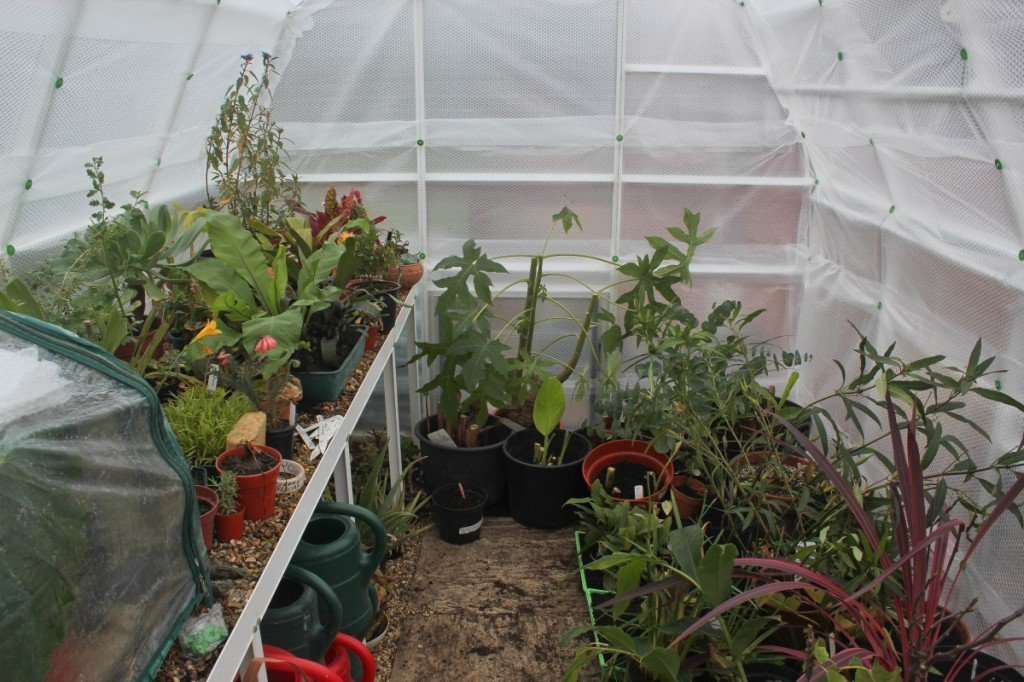
Some plants dislike the damp that characterises our winter weather, particularly plants like cushion alpines, as any leaves left on them, causes them to rot. Pick off fallen leaves regularly and cover with a pane of glass, polycarbonate or Perspex as protection. Helleborus niger, the ‘Christmas Rose’ needs covering too, so raindrops don’t splash soil onto the flowers. There’s a clump of Puya chilensis growing in a border at the base of my house wall, they need protection, too. Although they come from high altitude desert, they spend winter under the snow and the combination of freezing cold and damp creates pale spots on the leaves.
Annuals like ‘Chickweed’ and ‘Bittercress’ germinate, flower and seed rapidly, building up a seed-bank that will cause problems next year, so keep weeding in pots and borders, too. A layer of well rotted organic matter laid over the vegetable plot keeps down the weeds and stops winter rain from washing away nutrients – particularly nitrogen, this can be forked into the soil when you make your seedbeds, next spring.
My greenhouse has now been insulated with bubble wrap and tender plants have been lifted from the ‘exotic’ border. (see image) The vents will be opened whenever possible on mild, sunny days, shutting them down before temperatures drop early in the afternoon to capture the heat. A combination of high temperatures and low light makes leaves and stems soft, spindly and prone to grey mould which spreads rapidly in cool, damp conditions if ventilation is non existent and the air becomes stagnant. Chilling draughts should be avoided, so don’t leave the door open and err on the side of caution. An electric fan heater is not only useful for heat but maintains air circulation, too.
Cold, frosty weather freezes root crops like parsnips and maincrop carrots into the ground. Either cover them with a thick layer of straw or bracken or lift the roots and store them on boxes of damp sand for use whenever you need them, later in the season.
Now is a good time to check over your gardening tools, replacing broken handles and sharpening blades. Brush away soil, clean off rust with wire wool, spray the surface with water repellent and treat wooden handles with linseed oil before hanging them in the shed. Use a fine file to flatten notches on the cutting edge of hoes and spades and don’t check sharpened blades with your finger; cut a branch or twig instead!
Harvest sprouts by picking them from the bottom upwards, this helps the smaller immature sprouts near the top to develop, removing any ‘blown’ sprouts or yellow leaves; the leaves at the top can be harvested and steamed or lightly boiled, too.
The long, dark nights before Christmas are the ideal time for thumbing through catalogues to order plants for next year – it is a great morale booster and ensures that you are ready to start gardening next year! A happy, Ilex aquifolium filled Christmas to you all! Matt.


